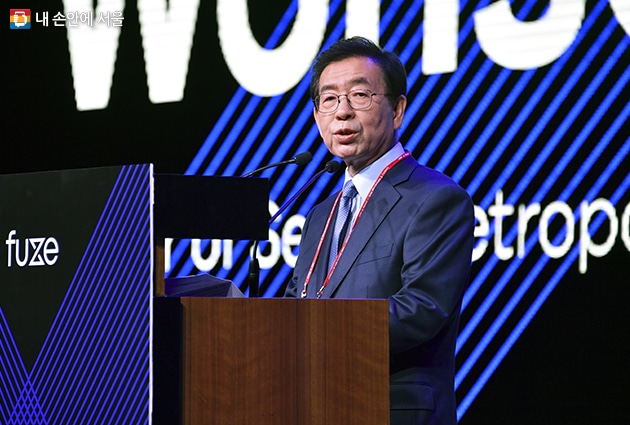Seoul has named two districts—Sungdong and Yangcheon—as the smart zones for utilizing high technologies such as the Internet of Things (IoT) in daily lives.
In the Sungdong-district, LED traffic signals would be installed on the pavements on both sides of crosswalks for those who walk using smartphones without paying attention to the surroundings.
When these smartphone-watching pedestrians, called in South Korea as ‘smombies’ (combination of smartphones and zombies) try to walk across the street even before the traffic light turns blue, smart sensors would warn these smartphone overusers against crossing the street.
When the sensors are out of order, the information is available at the district office center.
In the Yangcheon district, social workers could get information on whether the living-alone elderly are using electricity or not. When the signal tells no use of electricity for a few hours, social workers rush to their homes. This device is called the ‘smart plug.’
The Yangcheon district would install intelligent sensors at major places to monitor noise, dust wind, temperature, and humidity. The district would also install intelligent security lights to crack down on illegal dumping of waste, and illegal parking.
The city picked the two districts in an open competition among the 17 districts. Over the next three years, the city will invest about $3.4 million (3.6 billion won) in the projects.
The city will later expand the projects across all districts if the pilot projects are successful.
관련
기사제보 및 보도자료: press@blockmedia.co.kr
▶ 블록미디어 유튜브 바로가기 https://www.youtube.com/blockmedia
▶ 블록미디어 텔레그램 바로가기 https://t.me/blockmedia
▶ 블록미디어 페이스북 바로가기 https://www.facebook.com/blockmediakorea/

